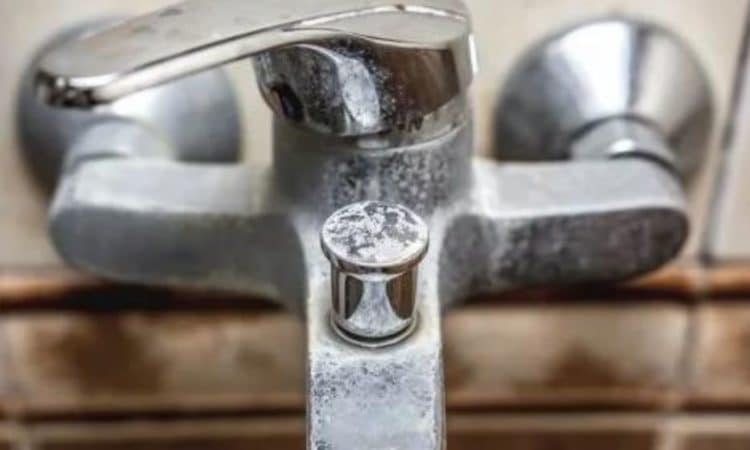The Amazing Trick to Remove Limescale from Bathroom and Kitchen Faucets Without Cleaning Products

The bathroom and kitchen are the places in the house that are used the most but also the most dirty, especially some accessories such as faucets, water faucet or even showers that often generate layers of scale or white spots, this is due to the constant use and the minerals that H2O has.
This gradually accumulates to form these stains that can project a lack of hygiene in the house, but fortunately they are very easy to remove, as long as they are cleaned as soon as possible.
To remove these mineral concentrations in faucets and showerheads, you can use various elements that are readily found in the kitchen, such as vinegar and baking soda, a mixture commonly used for household cleaning, as well as salt, soap and bleach.
We know that removing scale from bathroom and kitchen faucets can seem like a daunting task, especially when you’re looking to avoid using commercial cleaning products. But don’t fret! There are lots of easy, natural, and budget-friendly ways to keep your faucets sparkling. One of our absolute favorites is a simple mix of baking soda, salt, and lemon. This combo is like magic! Thanks to its gentle abrasiveness and natural acidity, it’s super effective at removing built-up tartar without damaging your surfaces. In the next few paragraphs, we’ll show you how to whip up this amazing blend and use it to keep your faucets looking their best.
Why does scale form on faucets?
Scale forms on faucets due to the accumulation of minerals present in the water, mainly calcium and magnesium. This buildup occurs when hard water, which contains high concentrations of these minerals, flows through the faucets and evaporates, leaving behind solid deposits that eventually harden into scale. Lack of regular cleaning and the high concentration of minerals in the water increase the formation of scale.
How to remove tartar from faucets, step by step
Baking soda and vinegar are a mixture that fights scale easily (Photo: Canva).
Gather the necessary materials: For this process we will need rubber gloves, white vinegar, lemon, baking soda, a stiff bristle brush or abrasive sponge, and a rag.
- Prepare a descaling solution: mix equal parts of hot water and white vinegar in a container. If we prefer a fresh scent, we can also squeeze a lemon into the mixture.
- Apply the solution to the affected areas: fill the areas with scale with the descaling solution. Make sure to completely cover the scale with the solution and leave it on for at least 15-30 minutes so that the acids in the vinegar or lemon dissolve the scale.
- Scrub the affected areas: use a stiff bristle brush or abrasive sponge to scrub the affected areas and loosen the tartar. Work in a circular motion to help remove tartar effectively.
- Rinse with clean water: after scrubbing, rinse areas with clean water to remove scale residue and descaling solution.
- Repeat if necessary: if the scale is persistent, we may need to repeat the process several times until it is completely removed.
- Dry the surfaces: after removing the scale, dry the surfaces with a clean cloth to prevent moisture build-up.
Other uses for baking soda, lemon and salt paste
Baking soda, lemon and salt paste is effective for removing scale from faucets due to its abrasive and acidic properties. In addition to this use, this mixture can be useful in other cleaning applications, such as:
- Sink cleaning: helps remove stains and residue on stainless steel surfaces.
- Cutting board disinfection: Baking soda and lemon help eliminate odors and bacteria.
- Oven cleaning: The paste can remove grease and burnt food residues.
- Tile cleaning: Improves the appearance of joints and removes resident mold and mildew.
- Descaling kitchen utensils: It is useful for cleaning utensils with grease accumulations or difficult to remove debris.
To apply the paste, rub the mixture on the desired surface with a cloth or sponge, leave for a few minutes and rinse with water.

